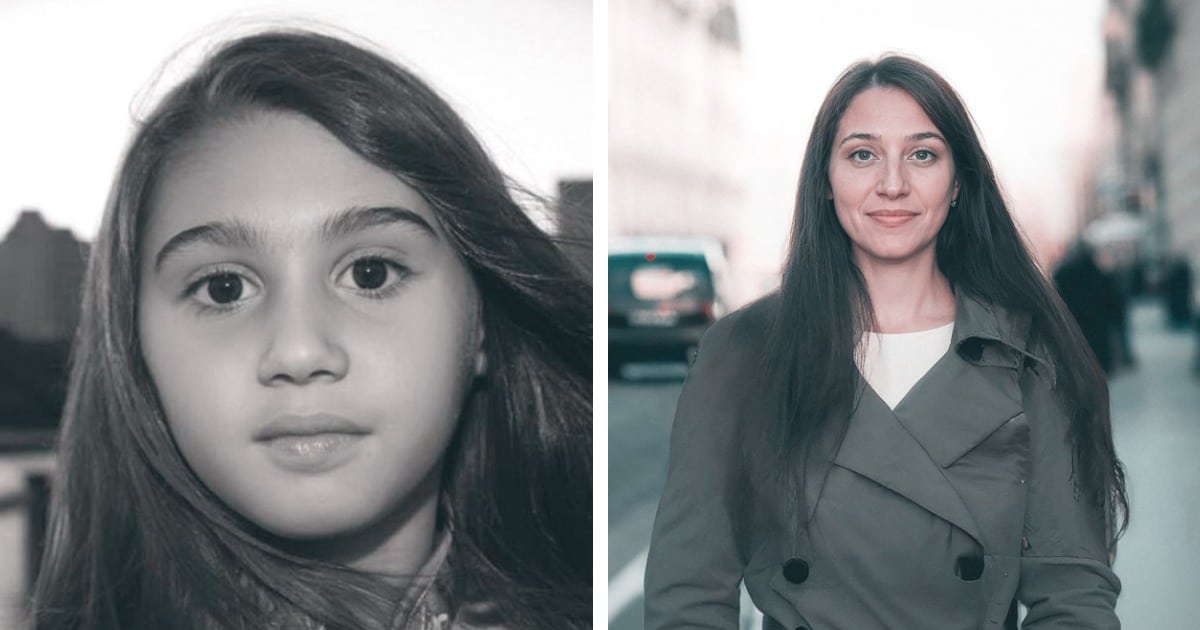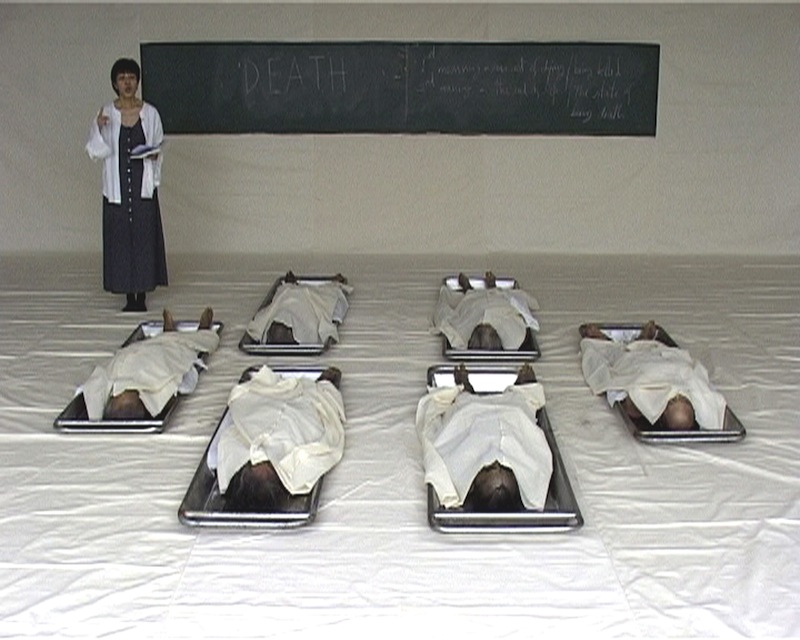Blanco sobre Blanco (White on White)
2014 - Film & Video (Film & Video)
0:45 minutes
Javier Castro
In the video Blanco sobre Blanco (White on White) , we see a white man appearing in a white screen embedded into a white wall— alluding to Malevich’s White on White series. Analogously, in Castro’s related work Negro sobre Negro (Black on Black) all we see is a completely black screen on a monitor that is recessed into a wall, also painted black. Gradually, the face of a man becomes visible as he steps out of the darkness and closer to the camera. As suggested by Castro, the color of this man’s skin allows him to pass unnoticed perhaps literally, but also metaphorically as he alludes with certain humor to the iconic work Black Square by Suprematist artist Kazimir Malevich, often referred to as the “zero point of painting” in Western art-historical discourses. Together, these works have a conversation: both of them appropriating Malevich’s monochromatic compositions, and conflating formalist discourses with racial and identity politics. Adding to the complexity of these works is the preference that art schools across Cuba and Latin America have given to Western discourses, inferiorizing artistic production from outside the West. Seen through this prism, Castro’s pieces are a poetic and provocative take on resolving formalism from within a body of colour.
Javier Castro was born in the in the neighbourhood of San Isidro in the heart of Habana Vieja, Cuba, where he lives and works. Influenced by the unique historical and present idiosyncrasies that define his neighbourhood—which is famous both as the site of José Martí’s (poet and martyr of the war for independence from Spain) childhood home, and the birthplace and murder of Alberto Yarini, a Cuban pimp, racketeer, and heroic symbol of Cuban identity—he films daily scenes from this area of the city, studying its tensions with an anthropological eye. Although he has previously worked in several media including installation and photography, he grew interested in video because of its ability portray the vitality of the present moment in the most immediate way possible. For Castro, it’s essential to capture reality in its most raw and unadulterated form, and hence he uses as little equipment as possible—no lights, sets or scripts—in order to preserve the natural dynamics of an environment. As a consequence, the people we see in his videos are never subject to artificial conditions. As described by Castro, the neighbourhood is his studio and his role as an artist is not to produce work, but rather to find and capture it without touching it. The social dimension of his practice is also important for Castro. At its very core, his work is about the people that he depicts and his own interrelations with them as another inhabitant of Habana Vieja. It’s this closeness and familiarity that allows him to earn his subjects’ trust, which ultimately leads to their honest portrayal. From his interactions with people emerge questions that speak of the human condition: the economy, language, sexuality, and violence all entangled in the stories of sociality and survival in Havana.
Colors:
Other related works, blended automatically
» see more

© » KADIST
Javier Castro
2012In the film La Edad de Oro (The Golden Age) Javier Castro asks several children to describe what they want to be when they grow up and what their best career option is in Cuba...
Related works sharing similar palette
» see more

© » MODERN MET PHOTOGRAPHY
AI Helps Families Forge "New Moments" with Lost Loved Oes Home / Photography AI Used to Help Families Forge “New Moments” With Lost Loved Ones By Jessica Stewart on January 31, 2024 Photographer and lawyer Alper Yesiltas has been an early adopter of AI, using the technology to see how he can manipulate existing imagery...

© » KADIST
Sin Wai Kin
2017A woman you thought you knew by Sin Wai Kin originates from a performance series titled A View from Elsewhere ...

© » KADIST
Jeamin Cha
2018Almost One by Jeamin Cha dives into an uncomfortable meditation on the relationship between socialization, performativity, truth, and childhood, filtered through the optics of a children’s acting class in South Korea...

© » KADIST
Manuel Solano
2020Since Manuel Solano became blind, they developed a technique that relies on audio descriptions that allow for an assistant to place pins and threads on a grid that guides the artist’s hands through the surface...
Other works by: » Javier Castro
» see more

© » KADIST
Javier Castro
2012In the film La Edad de Oro (The Golden Age) Javier Castro asks several children to describe what they want to be when they grow up and what their best career option is in Cuba...

© » KADIST
Javier Castro
2008In the video Negro sobre Negro (Black on Black) all we see is a completely black screen on a monitor that is recessed into a wall, also painted black...
Related works found in the same semantic group
» see more

© » KADIST
The Sable Eye with Ryanaustin Dennis, in partnership with Canyon Cinema Wednesday, June 6, Bar 6pm, Event 7pm, with works on view through June 9 Screening of Robert Nelson, Oh Dem Watermelons , 1965, 11 minutes, 16mm and Cauleen Smith, Chronicles of a Lying Spirit (by Kelly Gabron), 1992, 6 minutes, 16mm...

© » KADIST
Katia Kameli
2012Katia Kameli’s film The Storyteller explores the cultural role of deep-rooted artistic tradition in Morocco...

© » KADIST
Araya Rasdjarmrearnsook
2005The Class (2005) by Araya Rasdjarmrearnsook challenges the viewer’s personal sense of morality and tolerance by depicting a classroom from hell...

